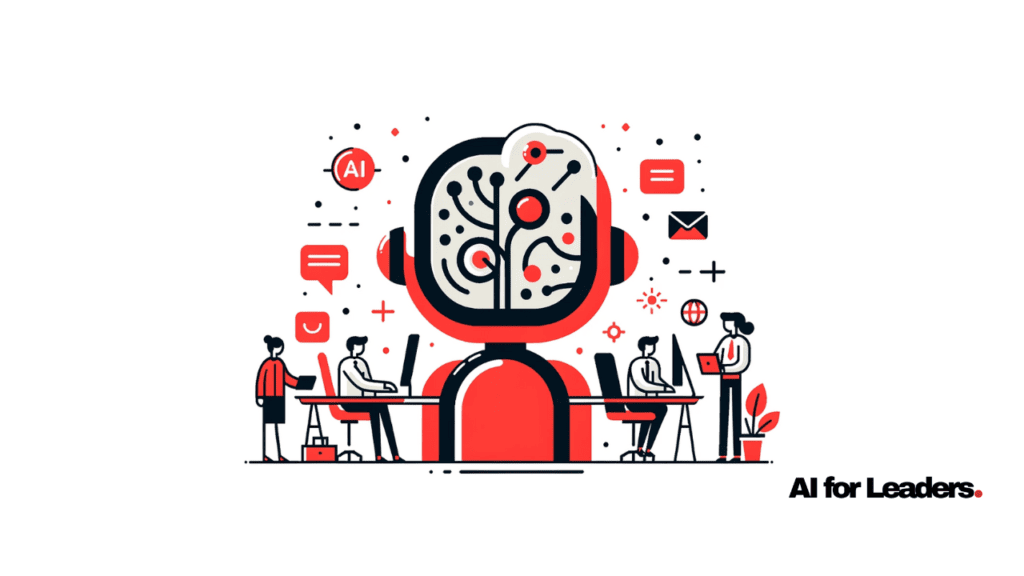
A CNBC and SurveyMonkey poll reveals that 72% of employees who use AI at work find it boosts productivity.
Despite the positive impact on productivity, 42% of employees express concerns about AI affecting their job security.
This is not surprising as the more people use AI at work, the more they fear how this is going to affect them later.
Experts suggest that AI will transform rather than eliminate jobs, advising workers to adapt and collaborate with technology.
What does this mean for leaders?
A few takeaways for business leaders:
- Leaders should recognize and communicate the productivity benefits of AI to their teams, highlighting its role in enhancing work efficiency.
- Addressing employee concerns about job security proactively is important to avoid losing talent; leaders should ensure transparent communication about AI’s role and impact.
- Training and upskilling employees to work alongside AI can alleviate fears and foster a more adaptive workforce.
Finally, emphasizing AI as a tool for job transformation, not replacement, can help shift the narrative from fear to opportunity, encouraging a growth mindset.
AI Hierarchies: A Cost-Effective Operating Model Concept
In a recent article, Ethan Mollick wrote about “An organization of AIs,” which highlights a future where multiple AIs can operate in a hierarchical system.
The idea is that more advanced AI models, such as GPT-4 can delegate tasks to specialized, cheaper AI models such as GPT-3.5.
The reason is that GPT-4 is more expensive to run than GPT -3.5, so to save costs operationally, it makes sense to have one AI tool talk to another when it feels like the task requires a different level to delegate to.
What does this mean for leaders?
Leaders should think about this concept of AI hierarchies in their organizations to enhance efficiency and improve cost-effectiveness.
There are multiple use cases where this can be used.
For example, Mollick gives an example an overwhelmed customer-service AI that can ask a smarter model to handle a complex problem. This is similar to a low-level tech saying “Let me get my supervisor.”
So as a business leader, you can save money by “hiring” less of the smarter AI models and more of the less smarter ones.
One Prompt You Can Use at Work Today
Here’s a practical ChatGPT Prompt you can use at work:
[Description of issue about an employee] I need to address this issue with them but I’m not sure how to approach the conversation without hurting their feelings. Can you suggest some ways to communicate my concerns effectively?
For example,
A team member has not been meeting deadlines and their performance is affecting the entire team. I need to address this issue with them but I’m not sure how to approach the conversation without hurting their feelings. Can you suggest some ways to communicate my concerns effectively?
If you would like to see more of those prompts, check out my free book called: ChatGPT for Better Business Communication.
You can grab it for free by clicking the link and subscribing to the newsletter.
This post originally appeared on “AI for Leaders.” If you’d like to receive updates about AI that will help you become a smarter leader in 5 minutes a week, click here to subscribe.
